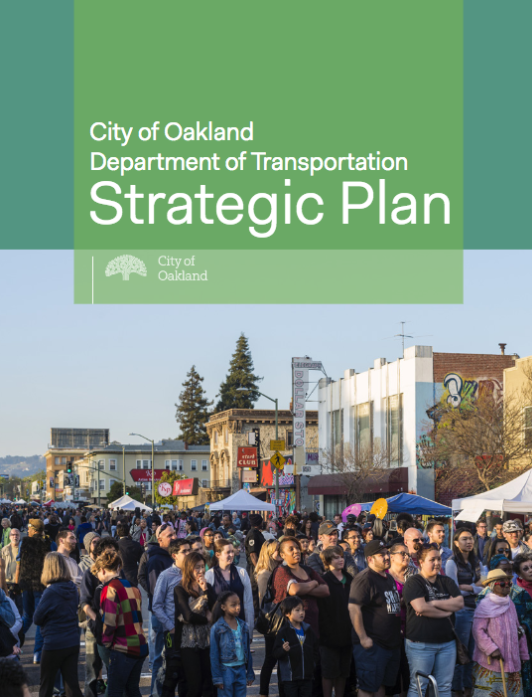
It's exciting times in Oakland, California. In the past six weeks, Oakland has passed a raft of policies that promise to have a lasting effect on the city's future transportation and development. This is all being done as part of the city government's reorganization, creating a new Department of Transportation to better strategize and coordinate transportation planning and construction.
The new policies include a strategic plan, an organizational chart for the now-forming Oakland Department of Transportation, a new citywide parking strategy (adopted last night by the City Council), parking requirements that better suit the city's planned growth, and the adoption—before being required to do so by the state—of induced vehicle travel instead of car delay to measure environmental impacts from new development.
Oh, and the city just posted a job listing for the permanent DOT Director. A national search has begun for the right person for what might be the most exciting job in planning available right now.
Much of this rapid progress is due to the guidance of Jeff Tumlin, who has been Acting Interim Director of the DOT, in charge of heading up the reorganization and laying the foundation for its future. Tumlin gives credit to the high level of local public support for changes, a great team, and the city's “willingness to align civic values with the mechanics of governance.”
The reorganization is giving the city an opportunity to step back and rethink its priorities, of which it has taken full advantage.
This strategic plan will act as a backdrop and framework for future policies and programs. Arielle Fleisher at SPUR wrote an in-depth report and analysis of the plan. In it, she points out some of the plan's strong points:
OakDOT’s strategic plan demonstrates a thoughtful understanding of the nexus between mobility and opportunity, prioritizing strategies to make sustainable modes of transportation available to everyone.
OakDOT doesn’t just acknowledge the impact of transportation costs on affordability—the agency lays out a series of strategies to make it easy and affordable for all Oakland residents to get around without a car. These strategies include: encouraging unified fare payment among transit operators; improving access to bike, car and ride-sharing options for residents of all income levels; and improving late-night transportation options.
But, she writes, a strategic plan is only part of the work that needs doing.
As OakDOT implements its vision for equitable transportation, the agency will need to be mindful of how this vision will impact, among other priorities, its corridor approach to planning. For example, OakDOT will need to decide, with community input, if its goal is to maximize transit ridership or broaden the reach of transit outside high-ridership zones.
Hand in hand with the strategic plan, the parking policy reform the city just passed includes some very Shoupian dimensions. These include dynamic pricing at parking meters to create more parking where it is most in demand—a policy being tested in downtown Oakland—and separating the cost of parking from the cost of renting housing, or “unbundling” parking. The latter can lower living expenses for people who don't have cars and, combined with the city's recent elimination of parking minimums for new developments, will make it less expensive to build new housing as well.
These are the kinds of forward-thinking strategies that, taken together, can make a city a more enjoyable place to be, offering travel choices that allow people to get safely where they want to go without having to get in a car.





